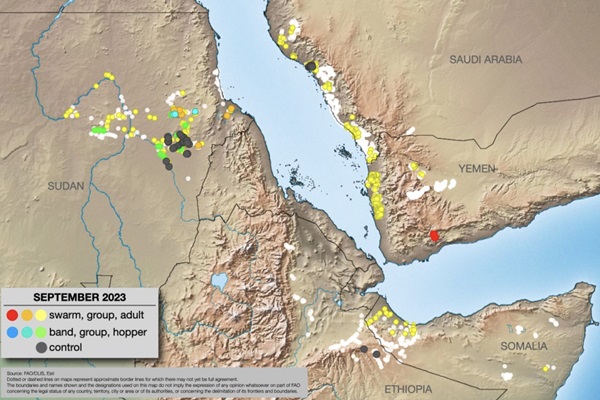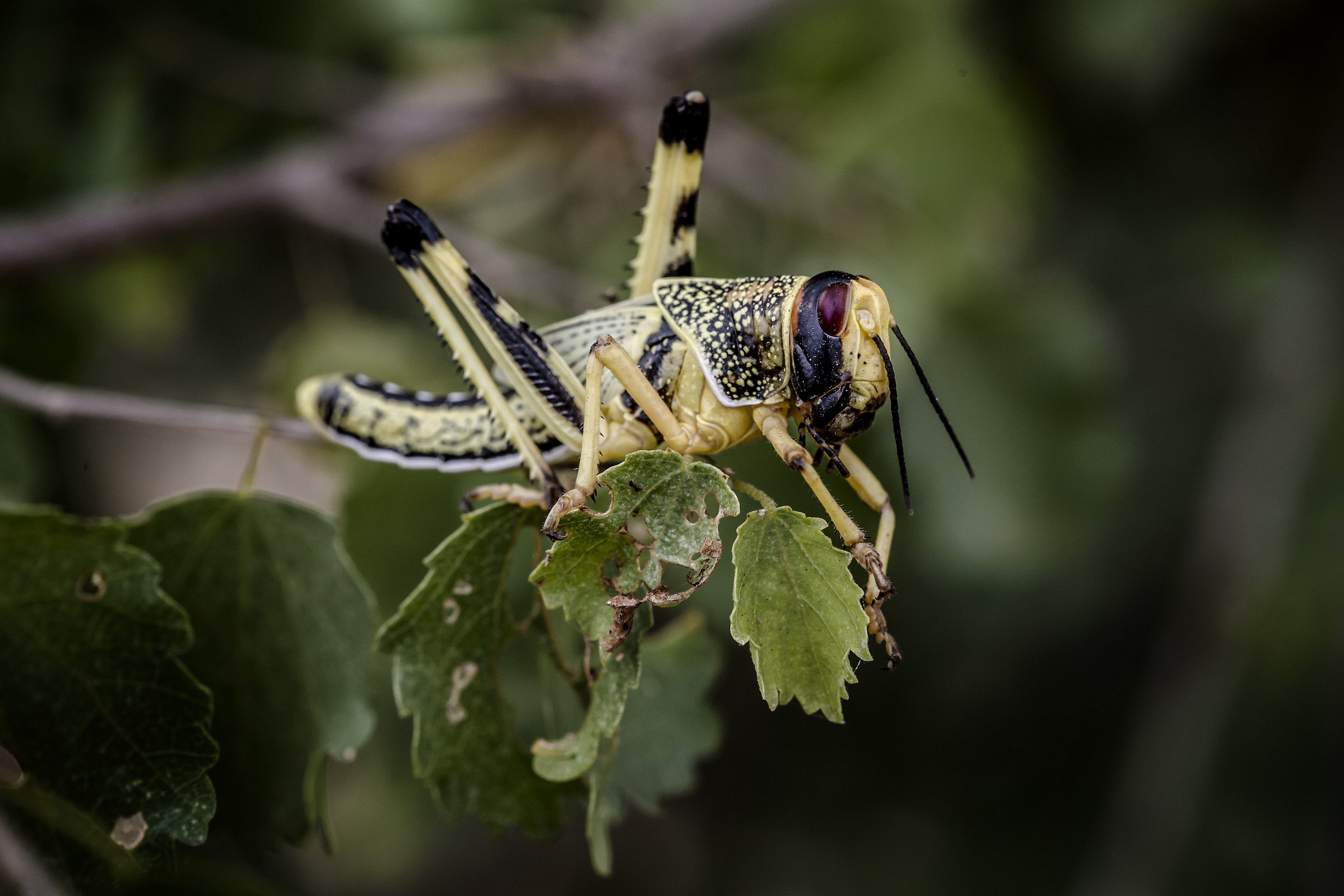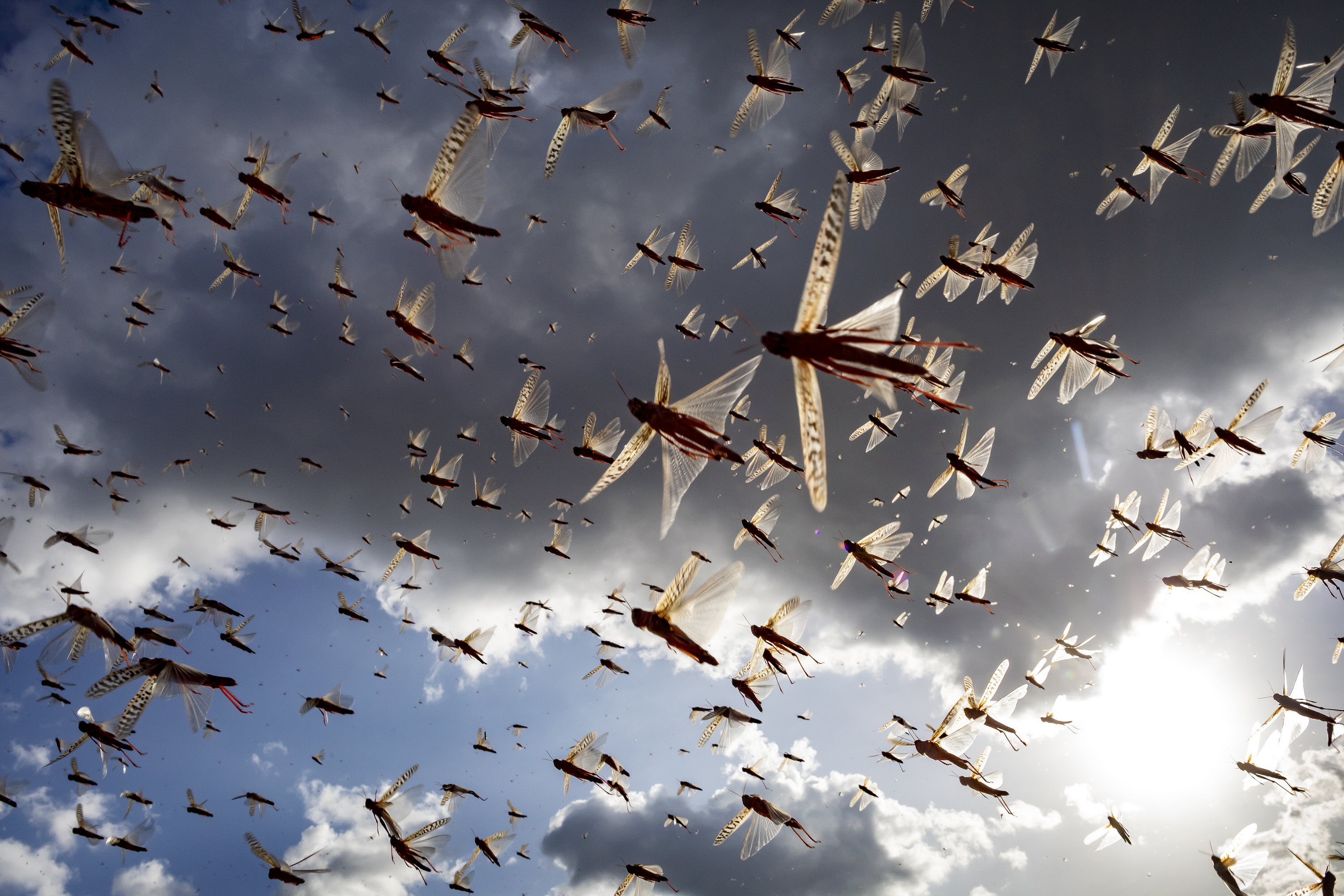Briefs
Latest updates of the locust situation

2 March 2024: Second-generation breeding
02/03/2024
- Overview: There a five Desert Locust outbreaks along the Red Sea and Gulf of Aden coast: Egypt, Eritrea, Saudi Arabia, Somalia, and Sudan.
- Current situation: Second generation of hopper groups, bands, and immature adult groups.
- Control: Operations decreased in February compared to January.
- March–April: Locusts will decrease because of control operations, diminished rainfall, and drying vegetation and limited small-scale breeding could occur in the spring; consequently, countries must maintain survey and control efforts.

5 February 2024: five outbreaks in Central Region
05/02/2024
- There a five Desert Locust outbreaks along the coast of the Red Sea and Gulf of Aden: Egypt, Eritrea, Saudi Arabia, Somalia, and Sudan.
- Current situation: Groups and swarms of the first winter breeding generation as well as the second generation of new hatching and hopper groups and bands.
- Control: Operations increased in January compared to December.
- February–March: Locusts are likely to decrease because of control operations, diminished rainfall, and drying vegetation in March, but countries must maintain survey and control efforts.

22 January 2024: second-generation breeding started
22/01/2024
- The four Desert Locust outbreaks that began in November continue to persist in Eritrea, Saudi Arabia, Somalia, and Sudan.
- The second generation of the winter breeding started this past week on the Red Sea and the Gulf of Aden coasts in southeast Egypt, Sudan, Eritrea, Saudi Arabia, northwest Somalia, and probably Yemen.
- Control operations continue during the first generation where there are mainly immature and mature adults, groups, and small swarms as well as some late instar hoppers, groups, and bands.
- The second generation will continue during February
and March when more rain is likely in the southern Red Sea and Gulf of Aden coasts and the interior of the Horn of
Africa.

5 January 2024: Central Region outbreaks continue
05/01/2024
- Current situation: Outbreaks persist with breeding, groups and bands in Egypt, Eritrea, Saudi Arabia, Somalia, Sudan; a few locusts in Mauritania, Western Sahara, Morocco, Algeria, Niger.
- Control: Increased fivefold in Egypt, Eritrea, Saudi Arabia, Somalia (only biopesticides), Sudan (some air); a few in Mauritania.
- January–March: second generation with breeding, hatching, groups and bands along parts of the Red Sea and the Gulf of Aden coasts.

5 December 2023: Central Region outbreaks
05/12/2023
- Current situation: Outbreaks developed, groups, bands, and breeding: Eritrea, Saudi Arabia, Somalia, Sudan.
- Current situation: The first generation of winter season (Nov–Jan) on the Red Sea and the Gulf of Aden coasts.
- Control: operations in Eritrea, Mauritania, Saudi Arabia, Somalia, Sudan.
- November–February: above-normal rains and perhaps a second generation of breeding (Feb–Apr) on the Red Sea and the Gulf of Aden coasts.

2 November 2023: Beginning of winter season
02/11/2023
- Current situation (breeding): Saudi Arabia, Sudan, Yemen.
- Current situation: The summer season has nearly finished in the northern Sahel from Mauritania to Sudan; the winter season is starting on the Red Sea and the Gulf of Aden coasts.
- Control: operations in Saudi Arabia, Sudan, Yemen.
- November–February: above normal rains in winter breeding areas for small-scale breeding in the Red Sea and the Gulf of Aden coasts (Egypt, Eritrea, Saudi Arabia, Somalia, Sudan, Yemen).

4 October 2023: Summer breeding
04/10/2023
- Current situation (breeding): Chad, Mauritania, Oman, Saudi Arabia, Sudan
- Current situation: A few swarms in Ethiopia, Sudan, Yemen; Groups in Oman, Saudi Arabia, Sudan; Adults in Chad, Egypt, Mauritania, Morocco, Niger, Pakistan, Somalia
- Control: small operations in Ethiopia, Oman, Saudi Arabia, Sudan
- October–November: above normal rains in summer breeding areas for small-scale breeding in northern Sahel (Mauritania to western Eritrea)
- Winter season: starts earlier than normal this year on both sides of the Red Sea and Gulf of Aden coast from October to February

4 September 2023: Locust in Ethiopia
04/09/2023
- Current situation: mainly adult groups and a few swarms in Eritrea, Ethiopia, Yemen; low numbers of adults in Algeria, Egypt, India, Mauritania, Morocco, Niger, Oman, Pakistan, Saudi Arabia, Somalia; a few hoppers in India, Mauritania, Sudan
- Control: small operations in Eritrea, Ethiopia, India, Morocco, Oman, Sudan
- September–November: above normal rains in summer breeding areas for small-scale breeding in northern Sahel (Mauritania to western Eritrea); below normal in Yemen and Indo-Pakistan
- September and October: scattered hoppers become adults
- Winter season: start earlier than normal this year on both sides of the Red Sea and Gulf of Aden coast from October to February

16 August 2023: Locust in Ethiopia
16/08/2023
In Eritrea, there was breeding in June on the central coast of the Red Sea coast. When vegetation started to dry out in July, some immature adult groups moved to the Eritrea highland while others probably moved further south on the coast. On 26 July, some immature adults were found in the lowland area in western Afar north of Chifra in Ethiopia and, three days later, a small group of immature were seen at Chifra.

2 August 2023: Locust in Yemen
02/08/2023
- Current situation: mainly adult groups and control in Yemen, Sudan, Eritrea; low numbers of adults in Algeria, Mauritania, Niger, Egypt, Ethiopia, Somalia, Oman, Pakistan, India.
- August–October: above normal rains in summer breeding areas for small-scale breeding in northern Sahel (Mauritania to western Eritrea); below normal in Yemen and Indo-Pakistan.
- August: one generation of summer breeding with low numbers of hatching and hoppers; perhaps a few small groups/swarms in northern Ethiopia in early August.
- September: scattered hoppers and fledgling (after mid-month)


